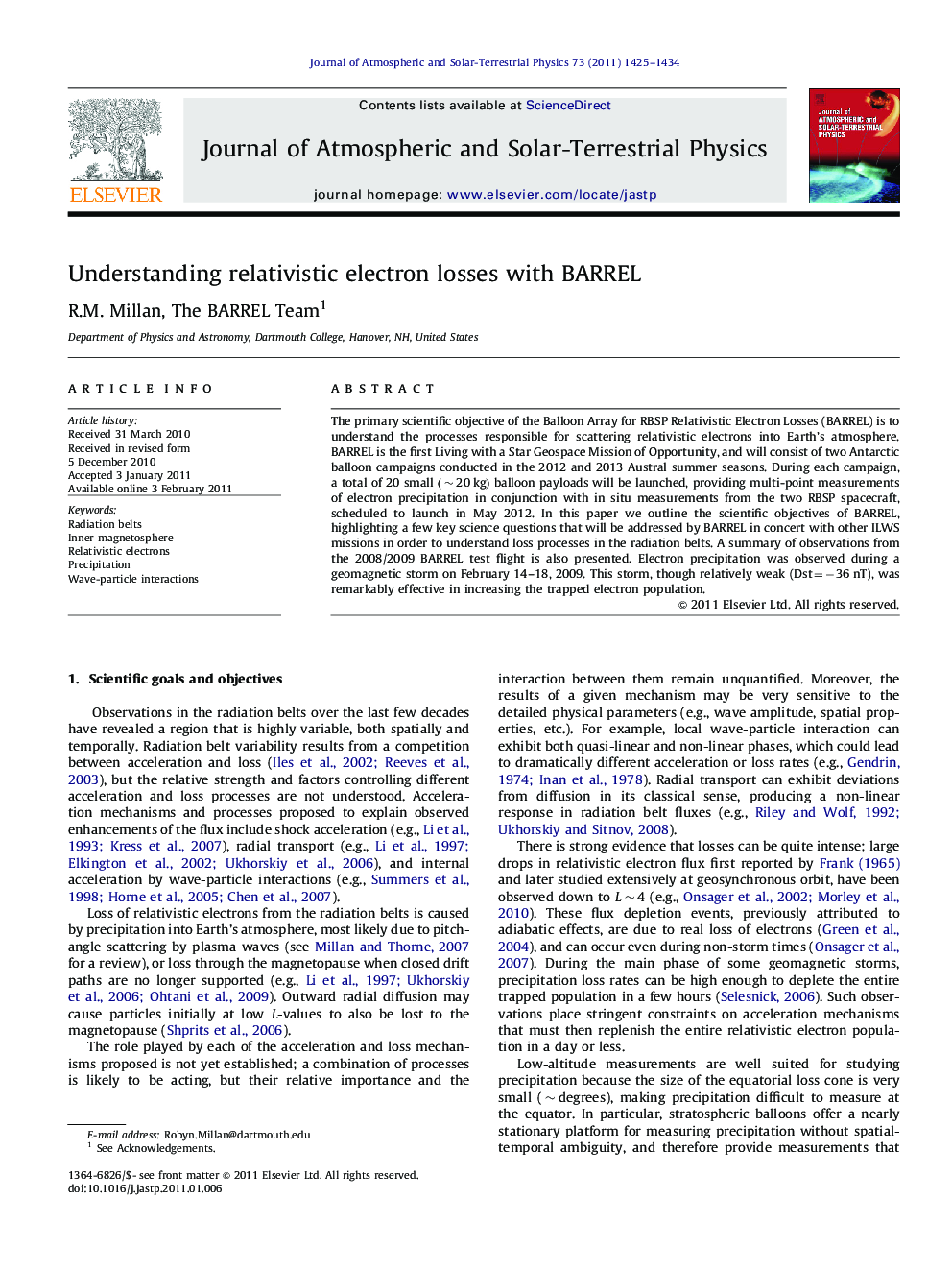| Article ID | Journal | Published Year | Pages | File Type |
|---|---|---|---|---|
| 1777263 | Journal of Atmospheric and Solar-Terrestrial Physics | 2011 | 10 Pages |
The primary scientific objective of the Balloon Array for RBSP Relativistic Electron Losses (BARREL) is to understand the processes responsible for scattering relativistic electrons into Earth's atmosphere. BARREL is the first Living with a Star Geospace Mission of Opportunity, and will consist of two Antarctic balloon campaigns conducted in the 2012 and 2013 Austral summer seasons. During each campaign, a total of 20 small (∼20kg) balloon payloads will be launched, providing multi-point measurements of electron precipitation in conjunction with in situ measurements from the two RBSP spacecraft, scheduled to launch in May 2012. In this paper we outline the scientific objectives of BARREL, highlighting a few key science questions that will be addressed by BARREL in concert with other ILWS missions in order to understand loss processes in the radiation belts. A summary of observations from the 2008/2009 BARREL test flight is also presented. Electron precipitation was observed during a geomagnetic storm on February 14–18, 2009. This storm, though relatively weak (Dst=−36 nT), was remarkably effective in increasing the trapped electron population.
Research highlights► BARREL will work with ILWS missions to reveal the physics of radiation belt loss. ► BARREL will measure relativistic electron precipitation using a flotilla of balloons. ► First results from the BARREL 2008/2009 test flight are presented. ► Electron precipitation was observed during the 2009 Valentine's Day Storm. ► This weak storm (Dst= −36 nT) was highly effective in enhancing the radiation belts.
